Review: Retra Supercharger
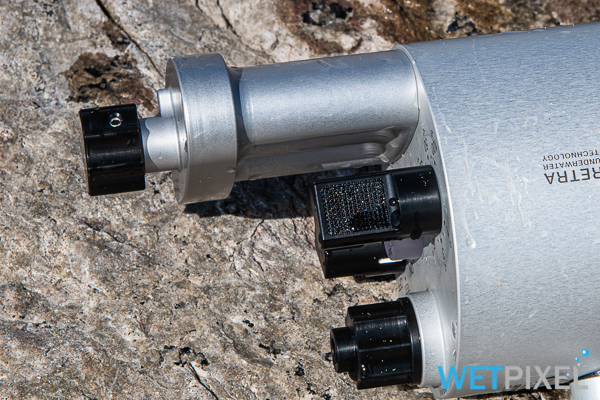
Retra is shipping their Pro and Prime underwater flash guns. These are both powered by 4 AA batteries (Retra recommends Eneloop), and Retra’s tests show that the Pro version offers recycle times of around 3 seconds at 80% power and 1.5 seconds for 40% power. In terms of the number of flashes at full power, Retra states that the Prime will provide 200+ while the more powerful Pro offers 150+.
One of the accessories offered with the original Retra Flash was a bolt-on battery pack that replaced the rear door of the standard battery compartment and added four additional batteries. By adding this extra power, Retra was able to decrease recycle times and give increased duration.
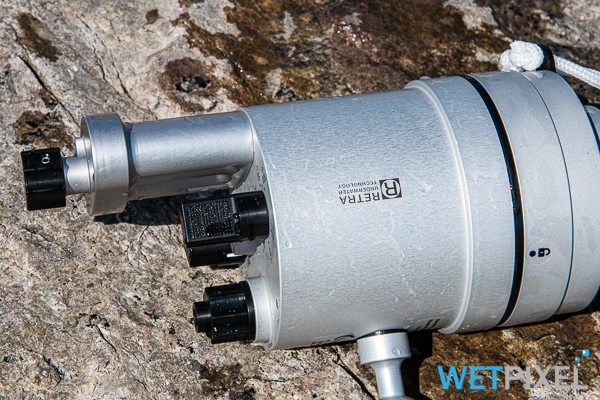
Earlier in June, Retra announced they were accepting pre-orders for a redesigned version of their battery pack, which is suitable for use with the Prime and Pro flashes(1). Called the Supercharger, Retra state that: “The Supercharger doubles the battery life and reduces the recycle time by more than 50%*.”
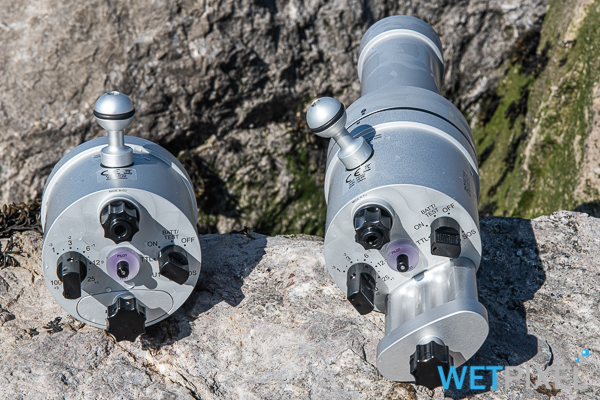
Retra kindly loaned Wetpixel Editor Adam Hanlon with a pair of Retra Pro flashes and a functioning prototype of the Supercharger for testing.
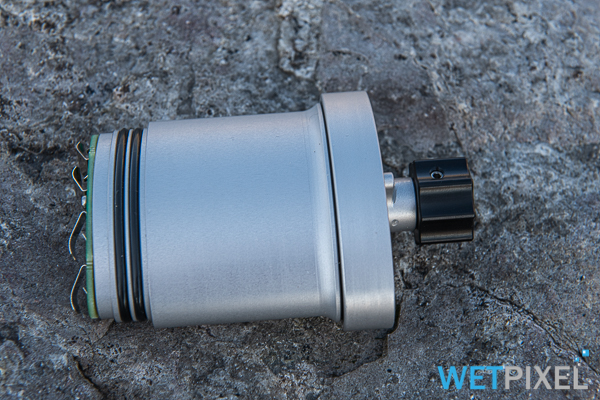
The Supercharger is machined out of aluminum and broadly consists of two components. Firstly, a battery compartment that accepts four AA sized batteries and has sprung connectors at the distal end.

It also has a reduced step with a dual O-ring seal that inserts into the battery compartments on the flash and an additional double O-ring seal at the proximal end that allows the Supercharger artery compartments to seal.
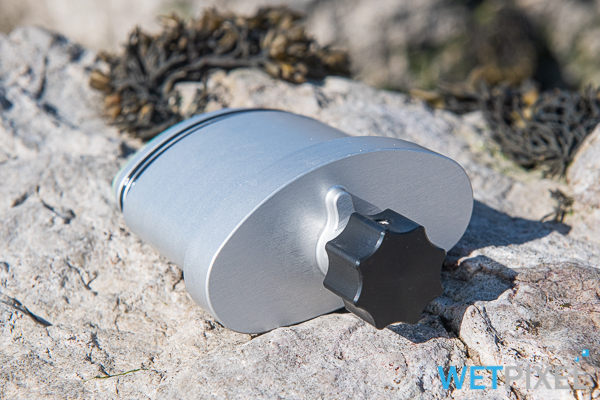
The second component is a closure cap that contains, internally, an additional sprung connector tray. The closure itself is a threaded rod that extends down through the whole Supercharger and attaches onto the threaded stud within the Flash’s battery compartment. This is sealed with an internal gland, and the rod has a Delrin knob attached, to allow the Supercharger to be attached and removed.

The Supercharger is anodized the same silver-grey color as the flashes.
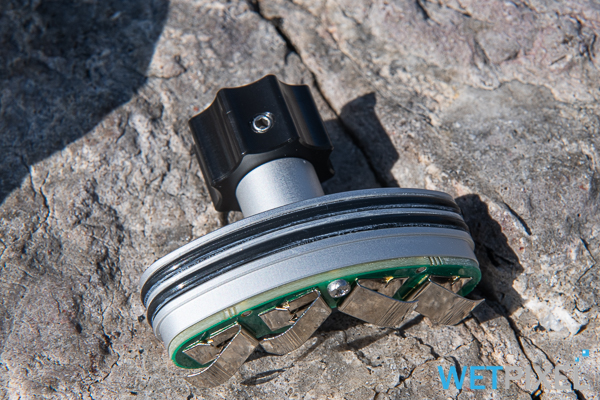
To attach the Supercharger, the user removes the existing battery compartment door (it makes sense to add fresh batteries at this point too).
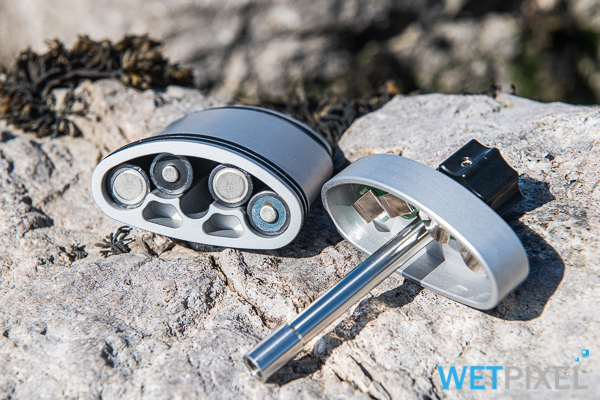
The Supercharger is loaded with batteries, and its cap is pressed home, with the attachment rod pushed down through the Supercharger battery pack. The whole Supercharger assembly is them pressed into the flash’s battery compartment, and the rod tightened down. As this takes place, it pulls the Supercharger into the battery compartment and tightens the Supercharger’s cap into position. Once correctly attached, none of the four O-rings are visible externally.
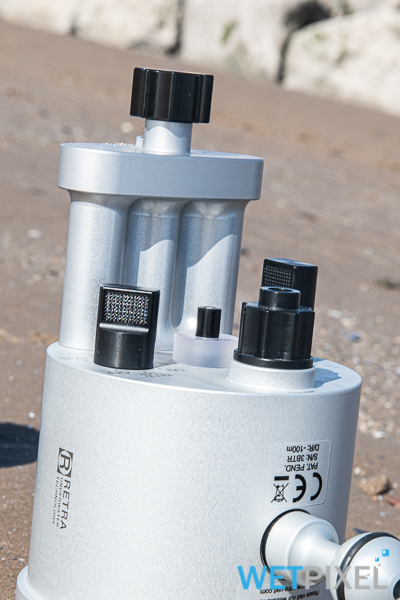
There is no adjustment needed to the Flash’s controls, and they, along with the ready light, work exactly as they do without the Supercharger attached.
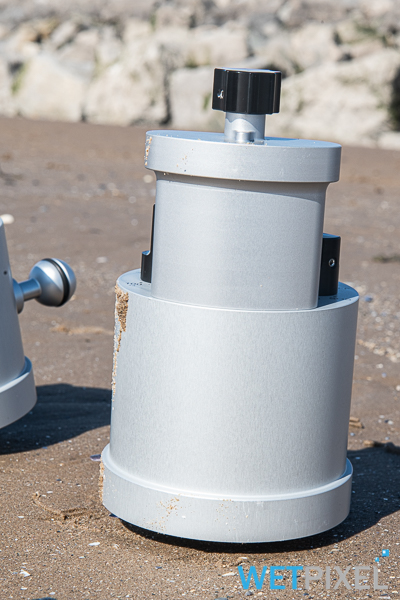
The Supercharger adds around 240g of weight to the Flash, with a set of Eneloop batteries.
In Use
The COVID-19 outbreak has meant that opportunities for testing equipment have been limited. In terms of the Supercharger, I have been able to use it on three dives. I should stress that UK diving conditions are not ideal for testing powerful strobes, so my review is aimed at the Supercharger’s function only.
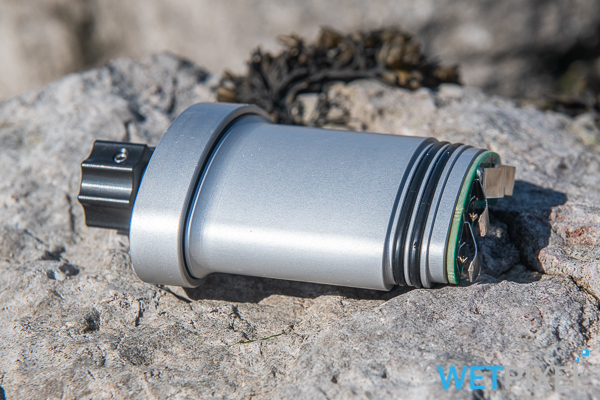
The unit supplied to me was a functioning prototype, but its finish was excellent. It did have a few minor tool marks, but this reflects the fact that it was a working prototype rather than a production version. I would be more than happy with the standard of finish on the prototype as a production version.
The unit feels very sturdy. There is no lateral play whatsoever in the gland that seals the attachment rod, and the sealing cap’s tolerance is very snug. Both sets of double O-ring seals have chunky approximately 2.5mm diameter O-rings that are reassuringly robust.
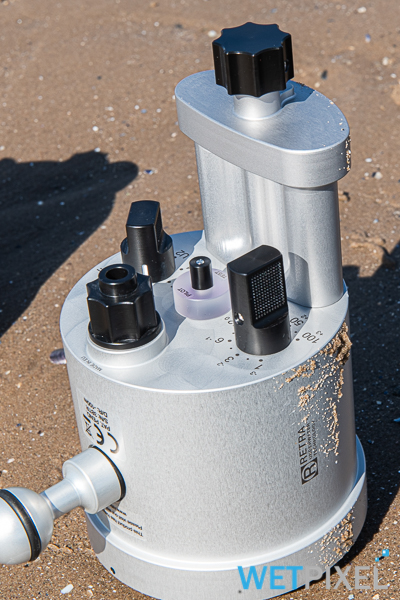
The Supercharger attaches snugly into the Flash’s battery compartment and, once assembled, feels very much like it is an integrated component of the Flash unit, rather than being an “add-on.” There is absolutely no trace of any movement or “wobbling” of the Supercharger once it is mounted. Retra mentions that it can be used to position the Flash, and the Supercharger is strong enough to comfortably support the weight of the whole flash. My experience would suggest this is undoubtedly true. I tend to hold the lower strobe when shooting verticals and, in this instance, did so by holding the Supercharger. I did so almost unconsciously and was unaware that I was doing so, showing how securely the Supercharger is attached.
Test Results
I carried out several recycle tests with the Supercharger, both on their own and also compared with a standard Retra Pro Flash.
My initial surface test consistEd of loading batteries into both flashes, setting them to 50%, and then using a land flash to trigger them optically. I used the Flash’s ready light to determine the frequency of triggering. I used two different methods, firstly, firing whenever the Supercharger equipped Slash was ready and secondly when the non-Supercharger Flash was ready. The latter emphasizes how much slower the standard Flash was recycling.
The team at Retra was somewhat concerned about the condition of the batteries used in this test, so all subsequent experiments were carried out using a new set of Eneloop batteries.
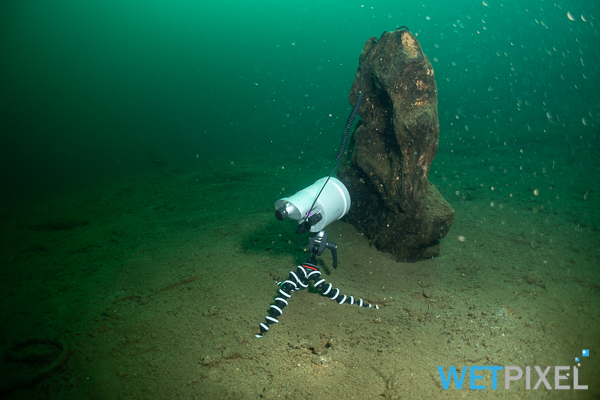
I then carried out two underwater tests. The first consisted of mounting the Supercharger equipped flash on a Gorillapod and triggering it via an Anglerfish Optical trigger and fiber cable. Again, it was set at 50%. Using an additional camera mounted strobe, I set the camera to 3 frames per second (fps) and shot continuously at this frame rate. As shown in the resulting composition image, the Flash managed to fire at two fps effectively.
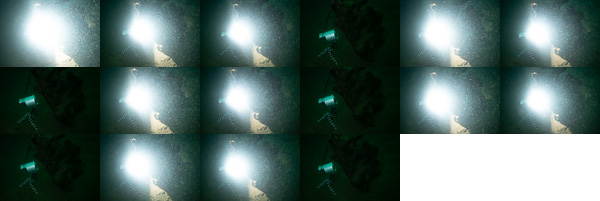
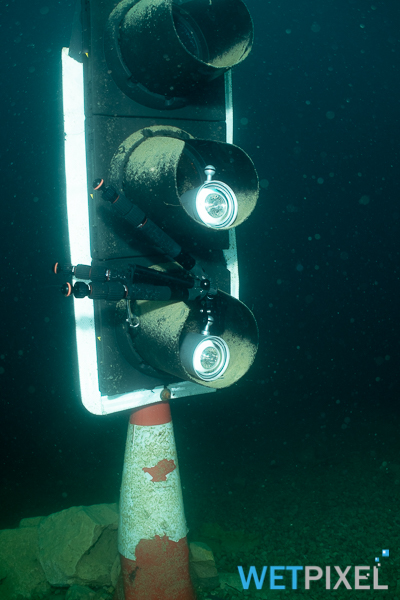
Lastly, I tested two Pro Flashes, one with the Supercharger. I triggered them both via their built-in optical slave triggers, and a camera mounted external strobe. Again their output was set at 50%. The camera was set to 1fps and triggered continuously.

The Supercharger equipped Flash was able to cycle continuously at this frame rate and output power, while the Flash without the Supercharger was unable to.
Hence the testing suggests that the Supercharger seems to pretty much double the recycling rate. The in-water tests were conducted in water at around 13°C. This is relevant as cool water adversely affects battery performance.
In terms of longevity, new Eneloops were again used, and both Flashes were placed in a bucket of freshwater at room temperature (17°C). They were triggered at full power repeatedly, whenever the ready lights illuminated. Initially, the non-Supercharger Flash’s ready light determined the speed of triggering. However, once its recycling time was greater than 5 seconds, this was seen as complete, and then the Supercharger equipped Flash’s ready light was used.
This was completed three times and provided the following averages:
Retra Pro: 172 flashes at 100% Retra Pro with Supercharger: 362 flashes at 100%
These correlate strongly with Retra’s figures.
Other points
Recycling times are critical in some shooting environments, namely fast-moving animals. These are often some distance away too, in blue water, and so strobe power is vital. In these circumstances, the Supercharger is an important tool.
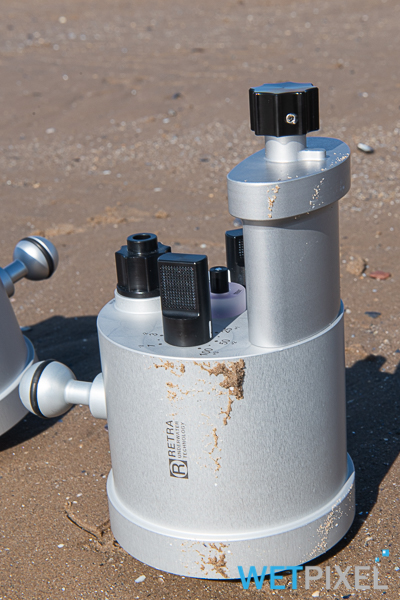
Attaching the Supercharger means that it is significantly harder to “tuck” the strobe in close to the port, due to the housing handle obstructing them. However, this strobe position would typically be used for macro or close focus techniques, which will rarely require faster recycling times.
Using the Supercharger increases the number of batteries and chargers that need to be carried on a trip. Of course, this needs to be balanced against the advantages that it provides.
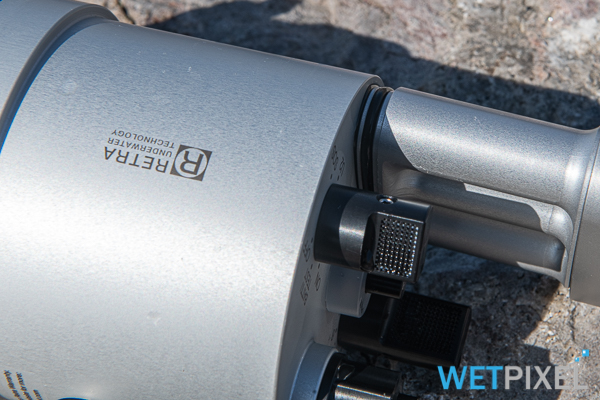
Inevitably, because there is another set of 0-rings to look after, this increases the potential number of potential leak points. The Supercharger’s construction helps to minimize this, but if you are the type of photographer that tends to rely on vacuum systems to ensure that your housing is sealed, bear in mind that the O-rings will need additional maintenance and inspection.
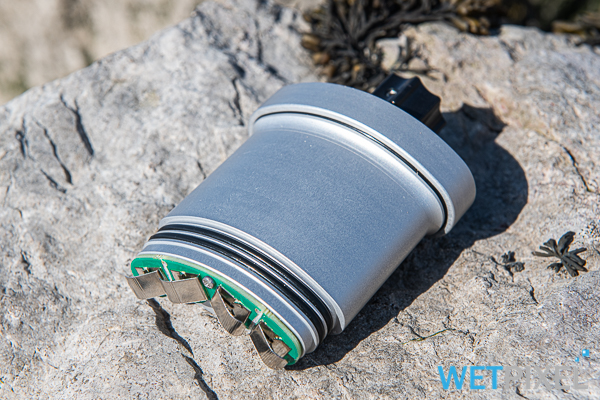
The Retra Supercharger is a reliable, beautifully engineered product that Retra Flash owner should consider if they find that they need to decrease the recycling times of their Flashes, or need additional longevity.
It is available at a special pre-order price of €199 (excluding local taxes) from Retra now, increasing to €239 from 30 June 2020.
FTC Disclosure
The Retra Pro Flashes and the Supercharger were loaned to the reviewer for the tests.
*1 Not suitable for use with Original Retra Flashes.